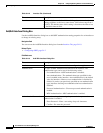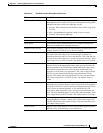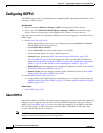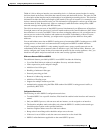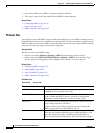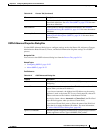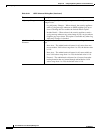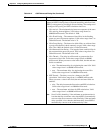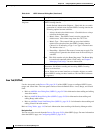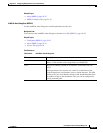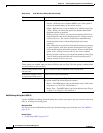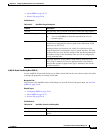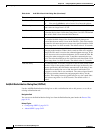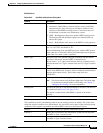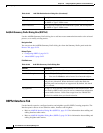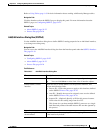
54-28
User Guide for Cisco Security Manager 4.4
OL-28826-01
Chapter 54 Configuring Routing Policies on Firewall Devices
Configuring OSPFv3
Area Tab (OSPFv3)
Use the Area panel on the Process Tab, page 54-24 of the OSPFv3 page to configure OSPFv3 areas,
ranges and virtual links. The Area panel consists of three definition tables—Area, Range, and Virtual
Link:
• Refer to Add/Edit Area Dialog Box (OSPFv3), page 54-29 for information about adding and editing
Area table entries.
• Refer to Add/Edit Range Dialog Box (OSPFv3), page 54-30 for information about adding and
editing Range table entries.
• Refer to Add/Edit Virtual Link Dialog Box (OSPFv3), page 54-31 for information about adding and
editing Virtual Link table entries.
Refer to Using Tables, page 1-45 for basic information about working with Security Manager tables.
Navigation Path
You can access the Area tab from the Process Tab, page 54-24 of the OSPFv3 page. For more information
about the OSPFv3 page, see Configuring OSPFv3, page 54-22.
Default Information
Originate
Settings used by an ASBR to generate a default external route into an
OSPFv3 routing domain:
• Enable Default Information Originate – Check this box to enable
generation of a default route into the OSPFv3 routing domain; the
following options become available:
–
Always advertise the default route – Check this box to always
advertise the default route.
–
Metric Value – The OSPFv3 metric used to generate the
default route. Valid values range from 0 to 16777214.
–
Metric Type – The external link type associated with the
default route advertised into the OSPFv3 routing domain.
Choose 1 or 2, indicating a Type 1 or a Type 2 external route.
The default value is 1.
–
Route Map – (Optional) The name of a route map to apply. The
routing process generates the default route if the route map is
satisfied.
Note This field contains only the Route Map name. The Route Map
is created and contained within a FlexConfig; see Chapter 7,
“Managing FlexConfigs” for more information.
Passive Interface Passive routing helps control the advertisement of OSPFv3 routing
information, and disables sending and receiving OSPFv3 routing
updates on an interface.
Enter or Select one or more interfaces, or interface objects, to enable
passive OSPFv3 routing on those interfaces. IPv4 and IPv6 addresses
are supported.
Table 54-21 OSPF Advanced Dialog Box (Continued)
Element Description



